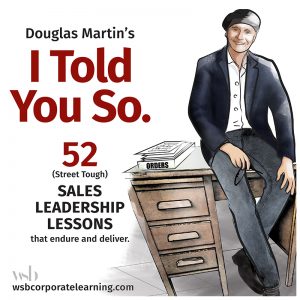Lurking in the Shadows, The NonDecision Maker
Selling is a deliberate path, which ought to lead to positive predictable outcomes. If we’ve done our jobs correctly, there should be a natural conclusion for a favorable agreement. Yet sometimes logic can be defied.
Salespeople, who travel, often cluster up in hotel lobbies at days end and chat amongst themselves, sociable animals that we are. Quite often we end up regaling each other with the wins and losses of our trade. This particular night in Dallas, the talk turned to things that submarine what would other wise be considered a solid deal. Oddities of loss, which defy logic.
Few people can claim to render their sales pitches down to the Nuts and Bolts of it, quite as well as Terry Harpen, who in a very cool twist of fate, actually sells Nuts and Bolts. Terry unfortunately got snookered on a piece of business he’d worked diligently for some time. Admittedly there is not a lot of complexity in Terry’s business, nuts and bolts come in standard sizes, materials, volumes and pack sizes. Not much differentiates his product from his competitors’ product, so much of his approach is relationship building and servicing his customers well.
No one expected the Nut and Bolt guy to contribute too much that evening let alone launch a stunning lesson for us. And truthfully, part of this sales ritual of sharing, is so that we can all tell the poor sap where he or she went wrong, making us look smarter than the average bear.
But there was nothing about Terry’s story that had given rise to any glaring errors. It seemed to all of us listening that our compadre should have gotten the business. “I followed up with the purchasing lead fully expecting to move to the next level of securing new vendor paperwork and ultimately getting a PO.” Terry said and we all nodded in agreement, however what he heard was “Sorry Terry, we are going with Dakota, but thanks for everything you’ve done and I appreciate your professionalism”.
Now we all know that buyers are reluctant to offer the tangible reasons for going with a competitor, primarily for fear you will translate it into an objection and try to overcome it and that would just lead to an awkward conversation. Most times, once a decision is made, it’s made. “I asked him to help me out and share what the tipping point was”. You could see that he was baffled even while he related this experience, but after a little nudging I suppose the customer felt he deserved the answer, “It may seem a little small Terry, but your product is just too shiny.” his customer shared with not even a hint of weirdness.
As far as objections are concerned, this was a new one for Terry. Gracious in defeat, he decided to do some poking around and discovered something. During the process, while Terry was going through the front door, his competitor was going through the back door. The Dakota rep had causally connected with the plant foreman and a couple of the assembly guys and had asked for their honest input on his company’s nuts and bolts. He was told straight out that they have no decision making power which he completely understood. But this wiley competitor knew that what they lacked in decision-making
SAMPLE SEGMENT 9
Lurking in the Shadows, The NonDecision Maker.
2 power they made up for with decision killing power.
Comparing both his rather dull product against Terry’s rather shiny product may have been perceived as a disadvantage from a pure aesthetics point of view, until his competitor postured the shininess as a possible safety issue; “It may seem like a small thing, but as you can see we dulled the finish on our product to reduce sunlight bounce. It doesn’t happen often but every once in a while those highly polished pieces will reflect a catch of sunlight and temporarily blind a worker … a worker with a pneumatic tool in his hand. It’s probably nothing, but for us, worker safety is important”. And after a few moments with the non-decision makers, he thanked them for their time and quietly snuck out, having firmly implanted two things; he cares about them, and shiny equals bad.
Terry’s competitor was brilliant and we all wished inside he were there so we could high-five him. We all agreed that “Shiny” was a stretch, but loved how he had postured an alliance with non-decision makers. He knew there was a better than good chance the buyer would stroll by the plant office and casually ask for input and in a four second conversation which went “Yeah, too shiny … sunlight bounce back … safety issue”. It was all over for Terry.
There are always people on the peripheral of your selling vortex that can knock the wind out of your sails in the time it takes to fill their cup at the water cooler. In today’s selling world there is an invisible ring of influence around every decision and we need to connect not only the solid black lines but the grayish dotted lines as well. Eliminating the potential of a future kibosh by subtle inclusions will pay dividends down the road.
As I think back to logical sales that never happened in my life, I wish I’d spent a little more time cultivating those who could have become a water cooler champion.
Touch everyone who contributes to the decision
Sample segment intended for informational review only. All segments are copyright © 2020 Douglas Martin and WSB Corporate Learning Initiative


 365 days is a long time. Almost a year. It is incalculable what happens within that time frame, and probable that none of us will know even one millionth of one percent of the whole. The enormity of change is simply beyond comprehension.
365 days is a long time. Almost a year. It is incalculable what happens within that time frame, and probable that none of us will know even one millionth of one percent of the whole. The enormity of change is simply beyond comprehension.